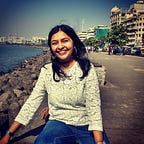Roll Up Your Sleeves, Get That COVID Shot!
As the adage goes, prevention is better than cure. If fewer people contract COVID-19, the spread is curtailed and the lesser it costs the already stretched healthcare system and therefore the economy. If we collectively reduce our disease burden, the faster we will recover as a country. To that end, the cost of immunisation is lower than the cost of healthcare or treatment. As a country, we have successfully eradicated smallpox and polio as a part of the Universal Immunization Program, one of the largest public health programmes across the globe, which has been studied from across the world. We will piggyback on this robust system and fight COVID effectively.
While the virus continues to mutate and spread, scientists and institutions across the world including in India have been working around the clock, and produced for the first time a vaccine in record time. It’s time that we as citizens take the necessary precautions to curtail the spread both for the sake of our families, communities and the economy at large.
India is the largest producer of vaccines in the world and we need to ride on this strength. We also have the advantage of an indigenous vaccine — BharathBiotech’s Covaxin, that is better suited to Indian climatic conditions. Other vaccines developed globally would need ultra cold storage, which would be a challenge for us. The company has announced the third and last phase of trials and will hopefully soon be given the green signal. If all goes well, we anticipate that the vaccine should be available at clinics at every level across the country by the peak of summer.
Additionally, UK’s AstraZeneca is likely to be available to Indians starting January although in much smaller numbers. Between Bharat Biotech, which has the capacity to produce 3–500 million doses per year, Serum Institute of India, which may be able to deliver 400 million a year, Cadilla which will add by another 100 million, India will have a billion vaccines a year across various options all of which would be on the table. To fully immunise India’s entire population, we will need an estimated two-three years. But we will get there, together and patiently, one vulnerable section of the society at a time.
To begin with, we will ensure that our front line fighters — doctors, nurses, ward boys, the police force, are immunised. Followed by this, the immuno-compromised and elderly should be prioritised next. This too should be prioritised within the densely populated parts of each state — Dharavi, Delhi etc. It is generally assumed that people with a higher immunity have a better capacity to withstand COVID even if they do contract the disease. However, since these individuals can be carriers, it is still advised that people continue to wear a mask, keep washing their hands and maintain social distancing.
This way, we can reduce the burden on our health systems, reduce mortality rates and ensure hospital beds are available to those fighting other chronic ailments such as cancer. If large sections of society are rushed to hospitals, fewer beds and doctors are available to other patients who require care. Essentially, we still need to continue to flatten the curve. This is the only way we will be able to manage it.
Those who have already contracted COVID over the last few months and recovered have already developed antibodies, and do not need the vaccine. It is very likely that a section of society has been asymptomatic, and so it would be ideal for these individuals to get themselves checked for antibodies before deciding to go for the vaccine.
We are already boosting our cold and additional transportation capacity to meet the new demands. From a non player, India has already become the second largest producer of PPEs, the demand for which is only expected to rise. Refrigerator flights, syringes, medical waste management systems all need to be set up to ensure we are prepared to deal with this systematically. Administering a vaccine also needs additional skills, which we are currently working on.
Anganwadi centres, schools, panchayat buildings have already been identified as locations where vaccines will be administered. The Electronic Vaccine Intelligence Network (eVIN) system will provide live data on vaccine availability across the country.
Private hospitals and health clinics, which are 70% responsible for health care in India will without a doubt have to pitch in to public health goals if we are to achieve our objective of immunisation across the country. It is by joining hands with private hospitals that we managed to ramp up our testing from 2–1,200 labs in just a few months. We will use this opportunity to ramp up our public health in our country without a doubt. But our focus for the long term should be to reduce the number of individuals who need healthcare and focus on preventing people getting sick in the first place.
Shivani Shah is a student of Public Policy at The Takshashila Institution, Bangalore and can be found on Twitter at @shivanishah
